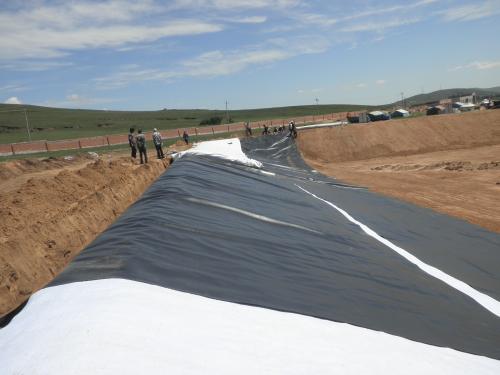Precautions and Technical Requirements of Composite Geomembrane During Anchoring
We know that composite geomembrane is an important anti-seepage material required in hydraulic construction projects.
In modern engineering projects, composite geomembrane is a common construction material. In the actual laying process, it is often carried out in accordance with eight operating steps.

First, the first step is preparation before construction. The underground pipeline networks such as cables, optical cables, and plumbing pipelines at the construction site are investigated and protected.
Second, the material should be checked before laying the low price aquaculture geomembrane.
Third, when cutting a composite geomembrane, the relevant dimensions should be accurately measured, and then cut according to actual needs. Generally, it is not appropriate to cut according to the illustrated size.
Fourth, minimize the number of welds when laying an impervious composite geomembrane, and save raw materials as much as possible while ensuring quality. It is also easy to guarantee quality.
Fifth, the overlap width of the seam between each material when laying is generally not less than 10cm, and usually, the welding seam arrangement direction is parallel to the maximum slope, that is, arranged along the slope direction.
Sixth, usually in the corners and deformed sections, the joint length should be as short as possible. Except for special requirements, as long as there is no welding seam on slopes with a slope greater than 1: 6 within 1.5 meters from the top slope or stress concentration area.
Seventh, during the laying process of the low cost textured geomembrane, human damage should be avoided to the greatest extent possible. When the temperature is low, it should be tightened and laid as far as possible.
Eighth, finally, after the laying of the composite geomembrane is completed, walking on the membrane surface, moving tools, etc. should be minimized, as long as it is likely to cause damage to the material, it should not be placed on the material.
